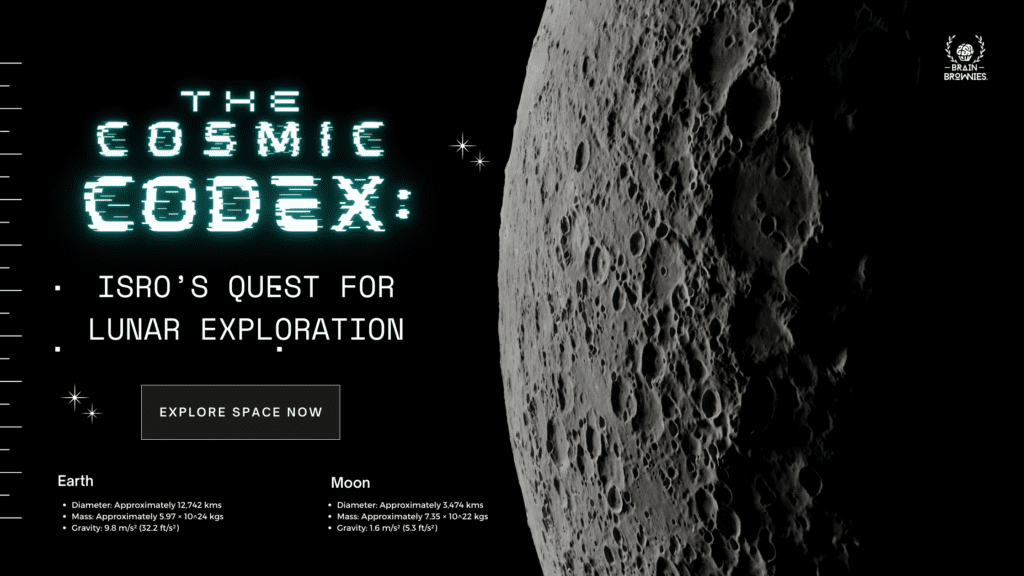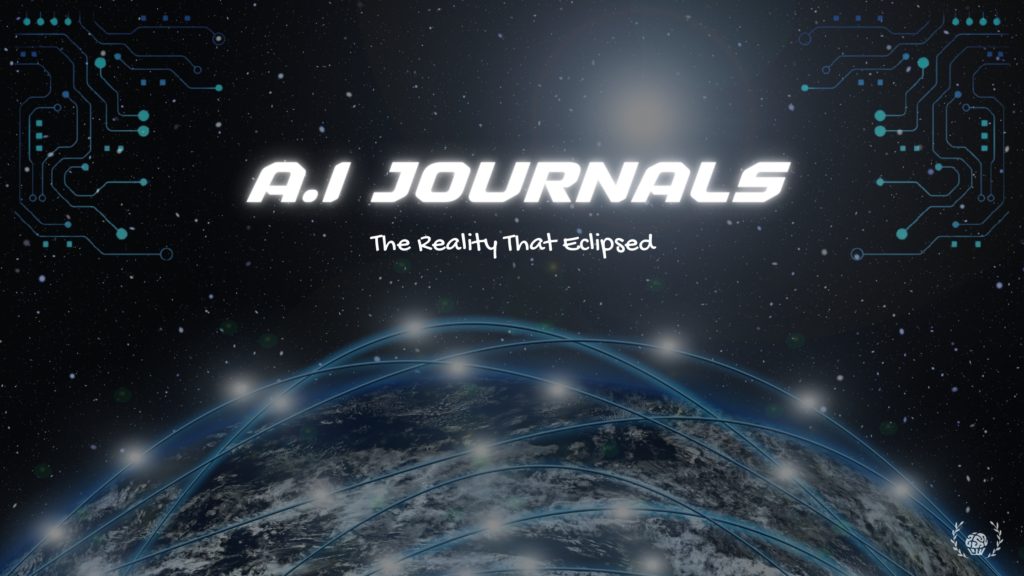Attention, My Fellow Earthlings ! We’ve got some out-of-this-world news that’ll make you want to moonwalk with joy! Get ready to have your mind blown faster than a rocket launch countdown , as we present the latest installment of ‘The Cosmic Codex’. So let’s Bake Dem Space Brownies for a cosmic adventure , as we delve deeper into the potential impact of the Indian Space Research Organization (ISRO) and its astounding mission with Chandrayaan-3 for deep lunar exploration.
Imagine this: India, the land of vibrant culture, mouthwatering spicy curries, and mesmerizing cinematic blockbusters, is now venturing into the celestial realm. Our intrepid space explorers at the Indian Space Research Organisation (ISRO) have set their sights on unraveling the moon’s deepest secrets. On a quintessential Friday afternoon, precisely at 2:35 pm, the skies above Sriharikota in Andhra Pradesh ignited in a golden blaze, embodying the nation’s hopes and dreams. The LVM3-M4 rocket, affectionately nicknamed the ‘Fat boy’ , proudly carried India’s pièce de résistance – Chandrayaan-3, marking a new chapter in our cosmic journey. Equipped with state-of-the-art scientific instruments, advanced cameras, and cutting-edge sensors far surpassing its less fortunate predecessor, this lunar odyssey is India’s cosmic phoenix rising from the ashes of Chandrayaan-2. Picture it as an interplanetary treasure hunt, with the moon’s surface serving as our invaluable map. Somewhere within the uncharted depths of the dark side of the moon lies the elusive X that marks the spot and the key to our discoveries.
But wait, why is this lunar expedition such a big deal ? Simply put, while the Western Space Agencies are exploring the viability of commercial space travel, ISRO’s Chandrayaan-3 aims to be a global pioneer in cost effective space exploration technology , paving the way for future lunar exploration and scientific breakthroughs. It’s not just about India’s space aspirations; it’s about humanity’s quest to unravel the mysteries of our universe.
The Mission
In an ambitious mission that took to the skies on July 14th, the Chandrayaan-3 spacecraft will not only attempt to touch down on the lunar surface by the 23rd of August ,but also embark on a groundbreaking scientific expedition. As part of this lunar odyssey, Chandrayaan-3 aims to delve deeper into the moon’s enigmatic realm, unraveling its history, geology, and potential resources. Join us as we uncover the remarkable scientific experiments that will make Chandrayaan-3’s mission a pivotal moment in lunar exploration.
Chandrayaan-3’s scientific voyage goes beyond just setting foot on the moon. One of its primary objectives is to study the moon’s captivating history. By analyzing lunar samples and geographical features from the dark side of the moon , scientists aim to unravel the moon’s past, understanding its formation, and shedding light on the mysteries surrounding our celestial dance partner.
The lunar surface is a tapestry of geological wonders, and Chandrayaan-3 is poised to unlock its secrets. Equipped with advanced instruments and technologies, the spacecraft will conduct detailed geological surveys, mapping out the moon’s surface features, craters, and potential volcanic activities. This invaluable data will provide crucial insights into the moon’s geological evolution and its mineral composition, in correlation with our own planet.
Beyond its scientific curiosity, Chandrayaan-3 carries the hopes of uncovering resources that may fuel future lunar exploration and even space missions. By scrutinizing the moon’s composition and conducting in-depth resource mapping, scientists aim to identify valuable elements such as helium-3, water / ice, and other essential materials. This knowledge could revolutionize our understanding of space resource utilization and lay the groundwork for sustainable human presence on the moon.
Chandrayaan-3’s mission isn’t just about scientific discoveries either; it’s a testament to human ingenuity and technological prowess. The spacecraft , lander and rover is equipped with cutting-edge instruments and state-of-the-art sensors, enabling precise data collection and analysis. The engineering marvels employed in Chandrayaan-3’s design will not only ensure it’s destined soft landing but also enhance our capabilities for future lunar missions.
Chandrayaan-3’s multidimensional approach to lunar exploration is set to inspire and ignite the curiosity of future generations to come. By disseminating its findings and fostering a spirit of exploration, this mission has the potential to spark a renewed interest in space science and engineering. The impact of Chandrayaan-3 extends beyond its immediate goals, encouraging innovation and propelling humanity toward new frontiers. Make sure you follow us for regular Brain Brownies on Chandrayaan-3’s journey and further chapters in our space exploration with ‘The Cosmic Codex’.
The Payload
Chandrayaan-3, the lunar mission by ISRO, aims to develop and showcase new technologies necessary for interplanetary missions. It consists of an indigenous Lander module (LM), Propulsion module (PM), and a Rover. The mission stands out as the first to attempt a soft landing near the Moon’s south pole, unlike previous missions that landed at lower altitudes. After the separation of the lander from the propulsion module, the rover will be deployed to conduct investigations on the lunar surface. Equipped with scientific instruments, both the lander and rover will contribute valuable insights about the Moon. Notably, the lander’s payloads include the Instrument for Lunar Seismic Activity (ILSA) to study moonquakes, Chandra’s Surface Thermophysical Experiment (ChaSTE) to estimate surface temperature, the LASER Retroreflector Array (LRA) from NASA to study the Moon’s dynamics, and the Langmuir Probe to measure plasma density near the lunar surface. Meanwhile, the rover will carry the Alpha Particle X-ray Spectrometer (APXS) to determine elemental composition and the LASER Induced Breakdown Spectroscope (LIBS) for elemental analysis of the lunar surface. Additionally, the PM hosts the Spectro-polarimetry of Habitable Planet Earth (SHAPE) payload, which collects data on Earth’s polarization of light to aid in the search for exoplanets with similar characteristics. Chandrayaan-3 is expected to operate for one lunar night, equivalent to approximately 14 Earth days.
Watch The Full Length Launch Footage From ISRO
We hope you enjoyed this delectable serving of Brain Brownies straight from the celestial oven ! Witnessing the launch of Chandrayaan-3 was truly awe-inspiring, reminding us of the indomitable human spirit and our insatiable hunger for space exploration. But the journey doesn’t end here ! The launch of Chandrayaan-3 marks the beginning of an incredible adventure, and we invite you to join us in uncovering the secrets of the universe.
Together, let’s embark on this cosmic odyssey, connecting the dots of the universe and unlocking the mysteries that lie beyond. Remember, knowledge is the sweetest treat, and Brain Brownies is here to make your intellectual cravings satisfied. So, grab a seat at our cosmic table and savor the irresistible flavor of knowledge. Stay curious, stay hungry, and let’s ‘Bake Dem Space Brownies’ together. Follow Brain Brownies on social media for your regular serving of cosmic updates and join us in unraveling ‘The Cosmic Codex’. Trust us, you don’t want to miss a single bite!







